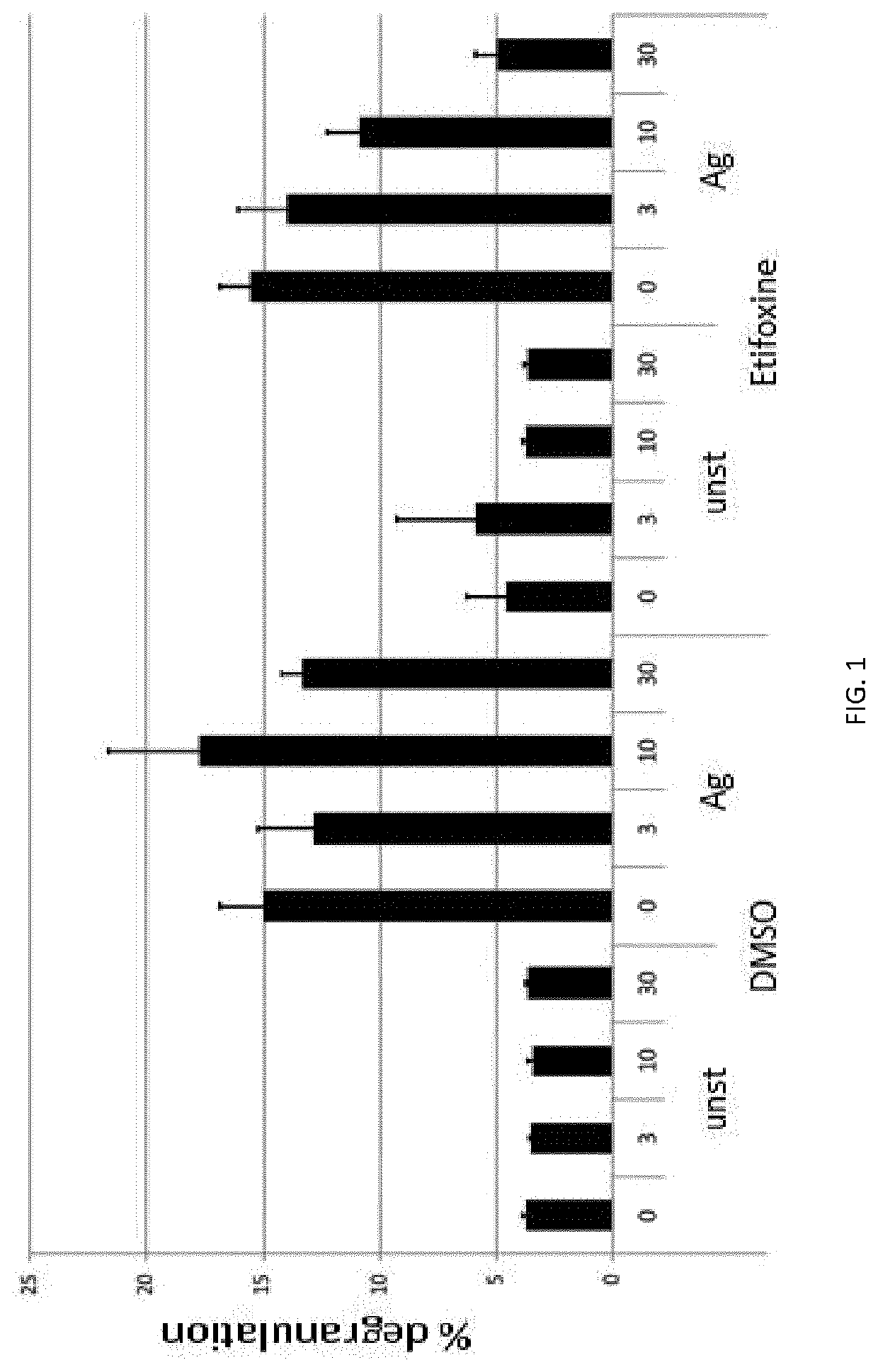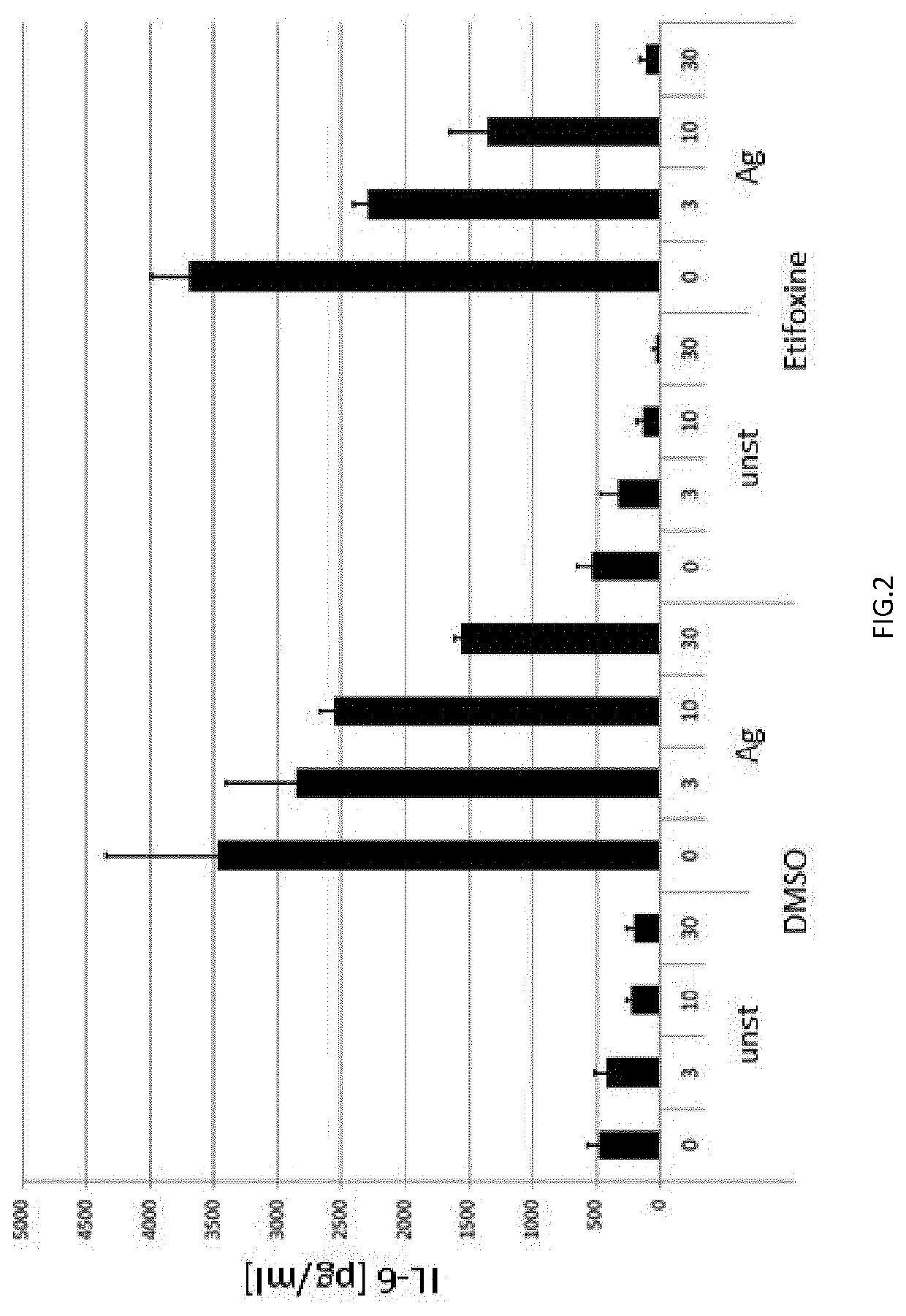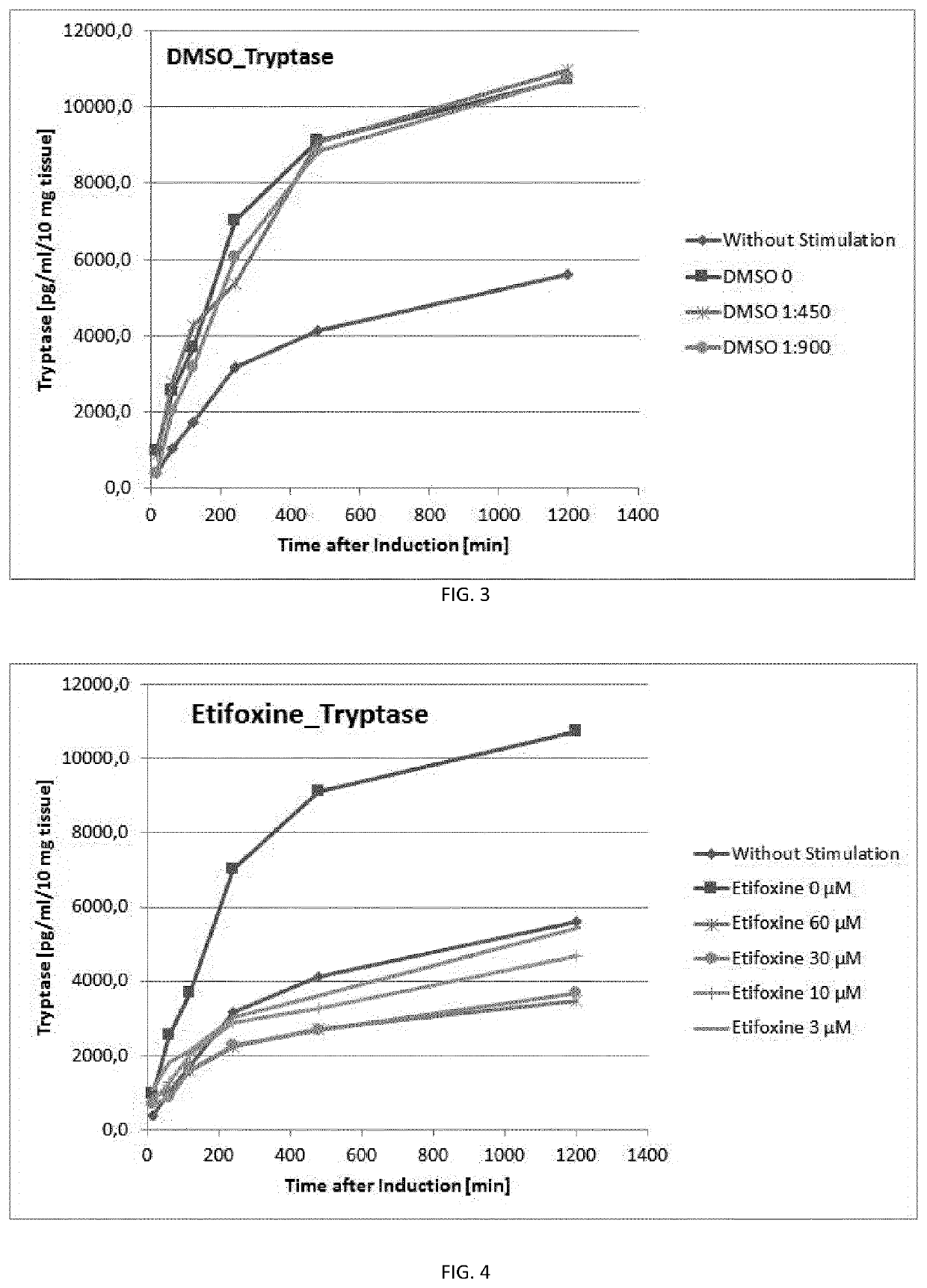Etifoxine for use in the treatment of diseases related to activated mast cells
a mast cell and activated cell technology, applied in the field of etifoxine, can solve the problems of inability of the epithelium to act as an effective barrier against pathogens and immune-activating antigens in the gastrointestinal tract, wreak havoc on the organism, and human immune system is not able to clear the viral infection
- Summary
- Abstract
- Description
- Claims
- Application Information
AI Technical Summary
Benefits of technology
Problems solved by technology
Method used
Image
Examples
example 1
In Vitro Inhibition of Activated Murine Mast Cells by Etifoxin Determined by the Reduced Release of β-Hexosaminidase
[0255]Etifoxine clearly suppressed Ag-triggered degranulation in a dose-dependent manner as determined by the significantly reduced amount of the mediator β-hexosaminidase released from the mast cells (FIG. 1, right). The percentage of inhibition can be calculated to be 10% for 3 μM Etifoxine, 30% for 10 μM Etifoxine, and 68% for 30 μM Etifoxine. Based on the considerably reduced degranulation of β-hexosaminidase of up to 68%, it is demonstrated that Etifoxine is an efficient inhibitor of FcεRI-mediated degranulation of mast cells in vitro.
example 2
In Vitro Inhibition of Activated Murine Mast Cells by Etifoxin Determined by the Reduced Release of Interleukin-6 (IL-6)
[0256]Treatment of the activated BMMCs with different concentrations of Etifoxine (3 μM, 10 μM, and 30 μM) dose-dependently suppressed Ag-induced release of IL-6 (FIG. 2, right). Taking into account the non-preventable solvent (DMSO)-induced reduction of IL-6 release (see Comparative Example 2), the percentage of inhibition can be calculated to be 20% for 3 μM Etifoxine, 48% for 10 μM Etifoxine, and 92% for 30 μM Etifoxine. Based on the considerably reduced release of IL-6 of up to 92%, it is demonstrated that Etifoxine is an efficient inhibitor of FcεRI-mediated activation of mast cells in vitro.
example 3
Ex Vivo Inhibition of LPS-Induced Degranulation with Etifoxine
[0257]Treatment of human nasal tissue pieces with different concentrations of Etifoxine (3 μM, 10 μM, 30 μM, and 60 μM) was demonstrated to effectively and dose-dependently suppress LPS-induced mast cell degranulation of tryptase (FIG. 4 and Table 2).
TABLE 2Effect of Etifoxine on the release of tryptase of human nasal tissue mast cells activated with LPS.Tryptase [pg / ml / 10 Timemg tissue]Etifoxine[1][min]Without LPSWith LPS60 μM30 μM10 μM3 μM15370.5972.1881.1676.0763.61107.7601026.42551.41054.5857.51252.61822.91201708.03679.51592.21619.42035.32116.72403174.17007.52241.22276.42901.83032.74804136.49126.72720.12678.23275.13622.012005610.910747.93472.13675.94687.05419.5[1]With LPS.
[0258]Taking into account the minor, but non-preventable solvent (DMSO)-induced reduction of tryptase secretion for 30 μM and 60 μM Etifoxine, respectively (see Comparative Example 3), the percentage inhibition of degranulation by Etifoxine can be de...
PUM
 Login to View More
Login to View More Abstract
Description
Claims
Application Information
 Login to View More
Login to View More - R&D
- Intellectual Property
- Life Sciences
- Materials
- Tech Scout
- Unparalleled Data Quality
- Higher Quality Content
- 60% Fewer Hallucinations
Browse by: Latest US Patents, China's latest patents, Technical Efficacy Thesaurus, Application Domain, Technology Topic, Popular Technical Reports.
© 2025 PatSnap. All rights reserved.Legal|Privacy policy|Modern Slavery Act Transparency Statement|Sitemap|About US| Contact US: help@patsnap.com



